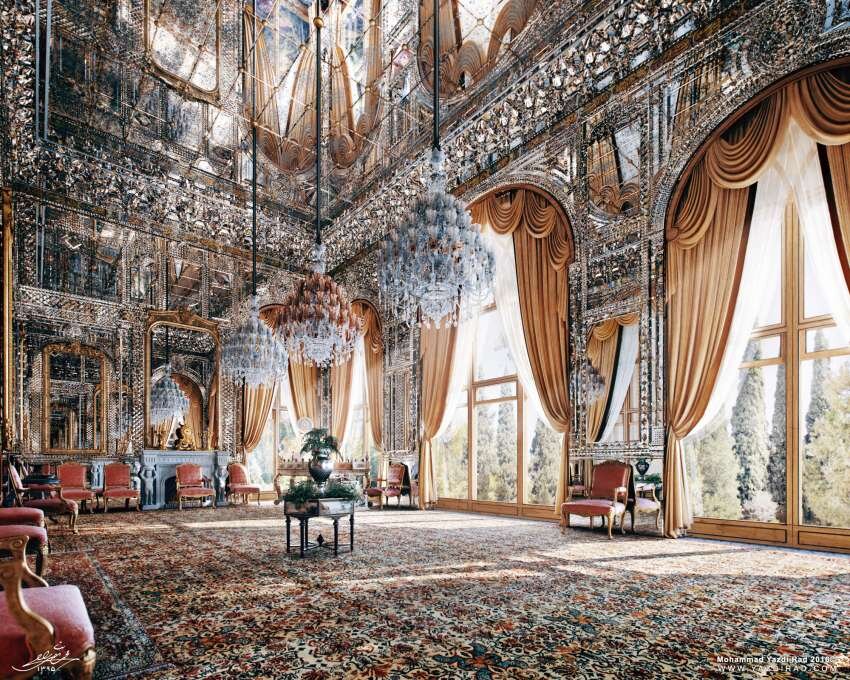From palaces to shrines: the brilliance of Iranian mirror work

TEHRAN - In the heart of Iran’s architectural history lies a shimmering tradition which not only decorates but also enlightens the spaces it adorns. It is the ancient art of mirror work, which is known for its dazzling display of light and intricate mosaics.
That remarkable skill is widely known as a testament to Iran’s innovative spirit in interior decoration. It is an art form involving the arrangement of small or large pieces of mirror mosaics, which helps transform interiors into luminous wonders.
By reflecting and multiplying light, these decorations elevate the aesthetic appeal of architectural spaces, creating an interplay of light and form that is both mesmerizing and practical.
As mentioned by Visit Iran, evidence of Iran’s longstanding relationship with glasswork dates back to the Parthian and Sassanid ears, where numerous glass artifacts have been uncovered. This deep-rooted tradition suggests that the intricate mirror work seen today is a continuation of ancient practices, refined over centuries to achieve its current form.
In Iranian culture, mirrors and water symbolize purity, fortune, honesty, and light. This symbolism is possibly why mirrors became a favored medium in Iranian decorative arts.
Initially, mirror work involved installing large, one-piece mirror panels in buildings. A prominent example is the Chehel Sotoun (Forty Columns) palace in Isfahan, where a large mirror once reflected the image of those entering the palace.
Over time, however, the size of the mirror pieces diminished, giving rise to more complex designs composed of smaller fragments.
The 19th century marked a significant period for mirror work’s popularity in the country. In that period, fine mirror pieces were cut into desired shapes and assembled into intricate mosaics, allowing artists to blend those materials with local craft skills.
The Qajar era saw a renaissance in Iranian architecture, despite an overall decline in architectural innovation. During the reign of Naser al-Din Shah of Qajar, Western artistic influences merged with traditional Iranian styles, leading to a resurgence in the arts, including stucco, mirror work, and mosaics. Royal buildings and shrines were adorned with elaborate mirror work, enhancing their grandeur and spiritual ambiance.
By the late 19th century, mirror pieces were often cut into small triangles, diamonds, or hexagons. Convex glasses, turned into mirrors, also became popular, adding depth and dimension to the designs.
Mirror work in the Qajar epoch reached its zenith with the creation of ornate patterns such as muqarnas, arabesques, and calligraphic inscriptions on mirrors. The Mirror Hall of Golestan Palace and Shams-ol-Emarat stand as iconic examples of this artistic pinnacle. These structures, along with many others in Shiraz, Isfahan, and Tehran, highlight the enduring legacy and unmatched artistry of Iranian mirror work.
Today, sightseers visiting historical mosques, palaces, and mansions may enjoy a dance of eternal brilliance through shimmering reflections of mirror work.
AM
Leave a Comment